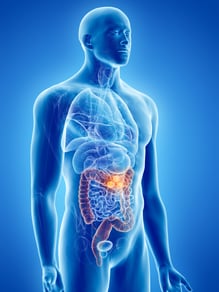 Anorectal function tests are usually performed in patients with fecal incontinence who have failed typical, conservative treatment. This study, which we are going to discuss right now, was aimed to determine the additive value of performing anorectal function tests in such patients in selecting them for surgery.
Anorectal function tests are usually performed in patients with fecal incontinence who have failed typical, conservative treatment. This study, which we are going to discuss right now, was aimed to determine the additive value of performing anorectal function tests in such patients in selecting them for surgery.
Introduction
Fecal incontinence is the inability to voluntarily control bowel movements causing stool to leak from the rectum, unexpectedly. It is a very disabling condition with a prevalence of roughly 6% in the adult population. Causes of FI are:
- Disruption of the anal sphincters secondary to obstetric or surgical trauma;
- Neuropathy such as multiple sclerosis diabetes mellitus;
- Neurologic deterioration related to nervus pudendus injury due to chronic straining during chronic constipation or delivery
- Decreased rectal capacity due to inflammatory bowel disease, radiation proctitis and/or irritable bowel syndrome, diarrhea, the physical inability to reach toilet facilities, and highly reduced mental awareness.
Treatment options for fecal incontinence are often limited. The first step is usually a dietary change with physiotherapy and fiber (with an efficacy of around 50-70%). Surgical interventions in the form of sacral nerve stimulation, gracilis plasty and artificial bowel sphincter creations are needed in few patients.
Anal endosonography and MRI are valuable tests to demonstrate the integrity of the anal sphincters and help in deciding patient selection for surgeries. Anorectal manometry is used to measure the anal pressures objectively, to determine the rectal capacity, and to demonstrate lower sphincter pressures in patients with sphincter defects or atrophy but it cannot predict the efficacy of biofeedback and physiotherapy.
This study aims to evaluate whether addition of anorectal manometry to anal endosonography provided additional information in guiding surgical management of patients with fecal incontinence failing conservative management and aimed to establish clear recommendations for the targeted use of these tests.
Study’s Materials and Methods: How Do They Matter?
1. Study population
Patients with fecal incontinence who needed evaluations were taken for study with comprehensive questionnaires including present complaint history, past history, surgical history, severity, etc. Exclusion criteria included IBD, proctitis, carcinomas, chronic diarrheas. Patients were then classified into three groups, namely:
A. Anal sphincter defects
B. Small sphincter
C. Large sphincter defects
2. Anorectal Manometry
- A four-microtip transducer, water-perfused catheter (Mui-Scientific Type SR4B-5-0-0-0, Mississauga, Ontario, Canada) was used.
- Water-perfusion method was performed by the means of a pull-through technique.
- Maximum basal pressures (MBP), maximum squeeze pressures (MSP) were measured and parameters were defined.
- Inflation balloon tests were performed for the elicitation of rectoanal inhibitory reflex (RAIR) and rectal compliance. Max MBP and volume (needed for RAIR) were recorded.
3. Anal Endosonography
Anal endosonography was performed using a 3D diagnostic ultrasound with a rotating endoprobe with two crystals covering 2-16MHz (with a focal range of 2-4.5 cm and a diameter of 1.7 cm), producing 360° view. Images were then reconstructed later with computer software. Defects in the external anal sphincter were described as hypoechogenic lesions. In addition to this, internal anal sphincter defects were described as the disruption or irregularity of the hypo-echogenic ring. Atrophy of EAS was judged upon its reflection of the outer interface, reflection pattern and length.
Statistical Analysis
- Performed with Fischer’s exact test, Pearson chi-square test to compare proportions.
- Spearman correlation coefficients were used to determine relationships between anal pressures and the Wexner score and Vaizey score.
- Analysis done with statistical software SPSS v.15.0
Results
- Anorectal Manometry: Male patients exhibited higher maximum squeeze pressure (MSP) and longer sphincter length (SL) than females (relevant data).
- Rectal Compliance: Anal pressures did not vary between patients who had high, moderate or low rectal compliance and there was no difference in male and female RC values.
- Anal Endosonography: Patients with sphincter defects are generally old aged, had one previous surgery, and larger RC. Patients with large defects had lower MBP and shorter SL. No anal manometry defects were seen in patients with large or small and large defects. Patients with atrophy had lower MBP and a lower MSP.
- Fecal Incontinence scores: Mean Vaizey score was 15 and mean Wexner score was 13. When it comes to soft stools – Vaizey score and the MSP and MBP had a correlation. Wexner score and MSP in patients with soft stool had significant correlation.
Discussion
For the detection of anal sphincter defects, anal endosonography (or MRI) is mandatory and considered as the gold standard. In conclusion, this study has confirmed that anal manometry has no contribution in detecting anorectal sphincter defects.
Although patients with large defects tended to have lower MBP and shorter SL than patients without sphincter defects, anorectal manometry could not differentiate between patients with and without defects. Other studies have shown comparable results. Anorectal manometry reflects the anal pressures; low pressures are caused by anal sphincter defects, pudendal neuropathy or both.
If you would like to perform Anorectal Manometry testing in your practice without buying equipment or having to train staff, click on the button below.


